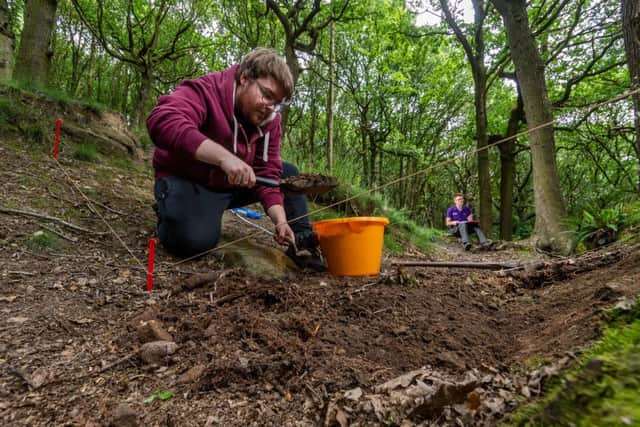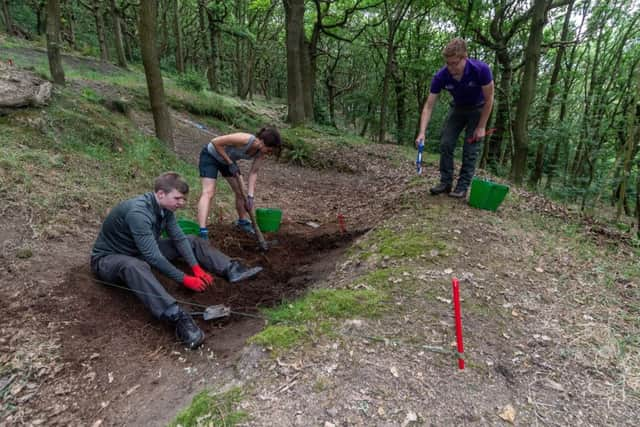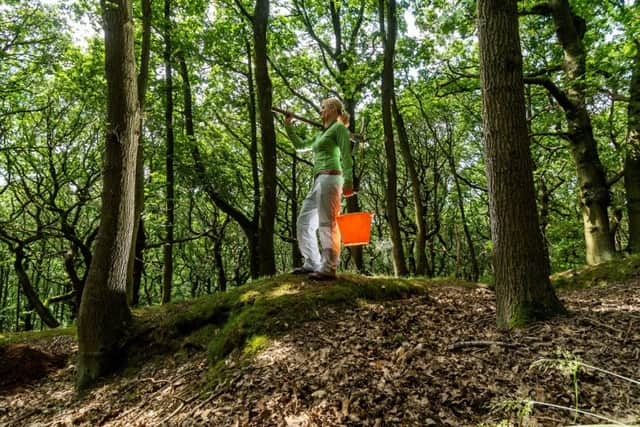Deep in the Pennines, trenches preserved by the woods are an eerie legacy of the First World War
and live on Freeview channel 276
The soldiers of the Duke of Wellington’s Regiment did their training in this part of Long Wood, before they were sent to the Western Front.
A century later, protected rather than reclaimed by the woodland environment, their imprints remain as a tangible legacy of the First World War.
Advertisement
Hide AdAdvertisement
Hide AdAfter three years and £500,000 of archaeological work, researchers hope they will survive for generations more.


Long Wood, near Copley on the outskirts of Halifax and the eastern fringe of the Pennines, was where the Army dug practice trenches for the first waves of troops destined for Europe.
Forgotten for years, they have emerged, almost perfectly preserved and up to a metre deep in places, during a lottery-funded archaeological exploration of woods across the South Pennines.
Archivists have also unearthed evidence of how trees and the woodland have been managed and used through time.
Advertisement
Hide AdAdvertisement
Hide Ad“The project has allowed us to revisit the archaeology of our woods,” said Chris Atkinson, heritage and landscape development officer with the rural regeneration agency Pennine Prospects, which yesterday began a fortnight-long community excavation in Long Wood, as part of the wider project.


The practice trenches, constructed in the same zig-zag style as those in France – which had been designed to prevent infiltrating enemy troops from firing down the length of the trench lines – were first recorded by a team of volunteers in January last year.
However, little is known of the area’s role in the wartime preparations, and Mr Atkinson said he now hoped to uncover new information on who had dug the trenches, and when.
He said: “Returning and getting the public involved in survey and excavation techniques will provide more information on this beautiful ancient semi-natural wood. For example, the discovery of buttons from uniforms will confirm the regiment involved.”
Advertisement
Hide AdAdvertisement
Hide AdNow in its final year, the project has surveyed 38 areas of Pennine woodland and found 1,500 new or previously unrecorded archaeological features.


They include mill buildings, medieval field systems, woodland boundaries, possible prehistoric cup-marked stones, former iron smelting sites, and the location of a presumed Roman road, which was excavated last summer at Ogden Water, near Halifax.
Volunteers also identified evidence that the wood had been a site of stone extraction and charcoal production.
Radiocarbon dating of charcoal found in two woods revealed that production of the fuel had been an important industry since at least the medieval period. A charcoal burning platform at Hardcastle Crags near Hebden Bridge in the Calder Valley was dated to around 1324, while another in Hirst Wood, near Shipley, was found to be even earlier. Both were in almost continuous use until the 19th century and their discovery is said to challenge the conventional understanding of the charcoal industry.